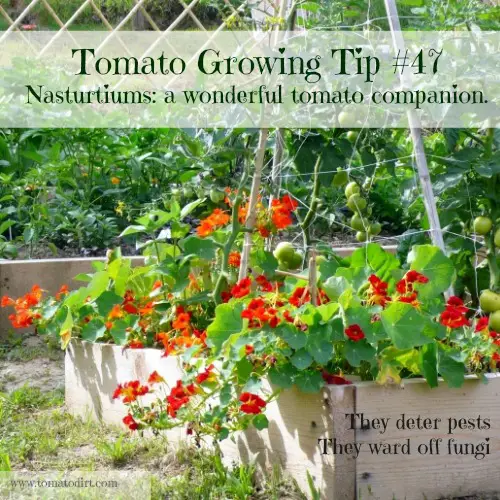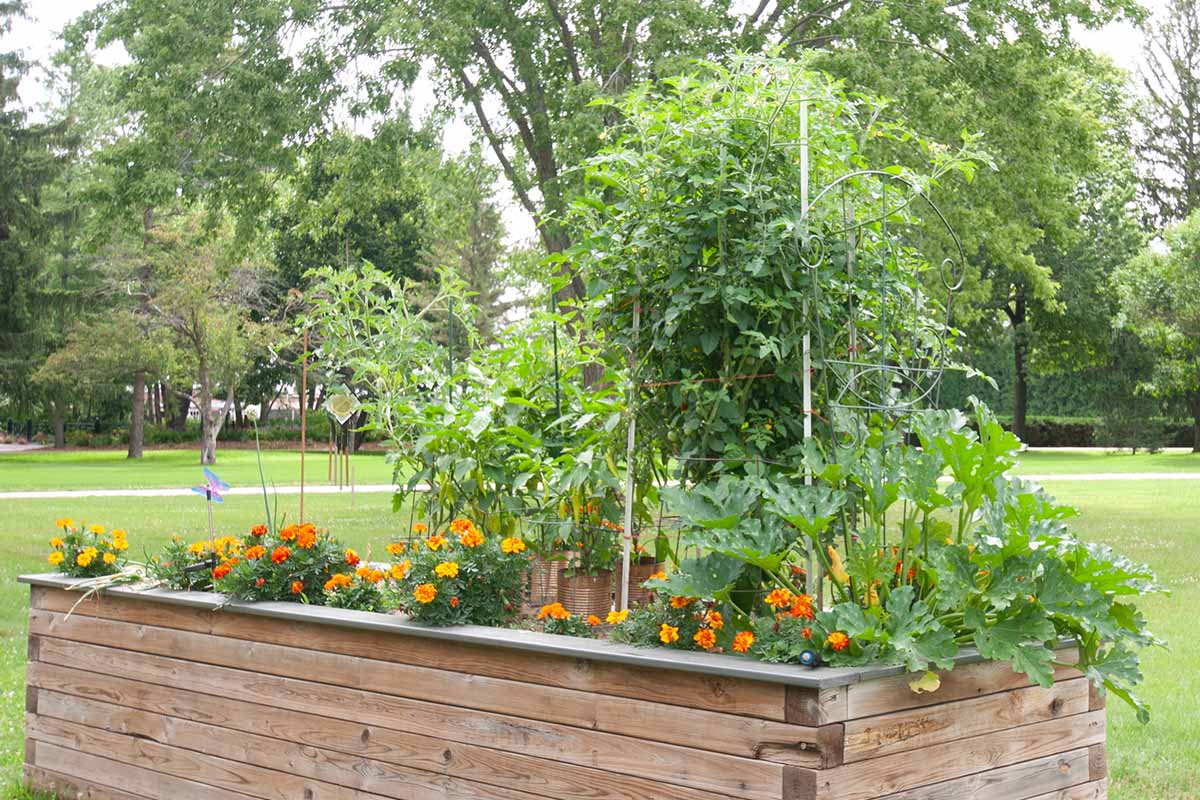Grow Better Tomatoes With These Companion Plants
Grow Better Tomatoes with These Companion Plants
Tomatoes are a popular garden vegetable that can be grown in a variety of climates. They are relatively easy to care for, but there are a few things you can do to help them grow even better. One of the best ways to do this is to plant companion plants with your tomatoes.
Companion planting is the practice of planting different types of plants together that benefit each other. There are many different companion plants that can be grown with tomatoes, but some of the most popular include:
- Basil: Basil is a classic companion plant for tomatoes. It has a strong scent that helps to repel pests, such as aphids and mosquitoes. Basil also helps to improve the flavor of tomatoes.
- Marigolds: Marigolds are another popular companion plant for tomatoes. They help to repel nematodes, which are pests that can damage tomato roots. Marigolds also help to improve the drainage of the soil, which is important for tomatoes.
- Onions: Onions help to repel aphids, beetles, and other pests. They also help to improve the flavor of tomatoes.
- Garlic: Garlic helps to repel aphids, beetles, and other pests. It also helps to improve the flavor of tomatoes.
- Borage: Borage helps to attract pollinators, such as bees and butterflies. Pollinators are important for the pollination of tomatoes, which can help to increase yields.
- Peas: Peas help to fix nitrogen in the soil, which is a nutrient that tomatoes need. Peas also help to suppress weeds.
- Beans: Beans help to fix nitrogen in the soil, which is a nutrient that tomatoes need. Beans also help to suppress weeds.
When planting companion plants with your tomatoes, it is important to choose plants that have similar growing requirements. For example, all of the plants listed above are sun-loving plants that prefer well-drained soil. You should also plant companion plants that will not compete with each other for nutrients or water.
In addition to planting companion plants, there are a few other things you can do to help your tomatoes grow better. These include:
- Water your tomatoes regularly. Tomatoes need about 1 inch of water per week.
- Fertilize your tomatoes regularly. Use a balanced fertilizer, such as a 10-10-10 fertilizer.
- Support your tomato plants. As your tomato plants grow, they will need support to keep them upright. You can use stakes, cages, or other supports.
- Pest control. Monitor your tomato plants for pests and diseases. If you see any problems, take action to control them.
By following these tips, you can grow healthy, productive tomato plants. And by planting companion plants, you can help to improve the flavor and yield of your tomatoes.
Conclusion
Companion planting is a great way to improve the health and productivity of your tomato plants. By planting the right companion plants, you can help to repel pests, improve pollination, and add nutrients to the soil. With a little planning, you can grow delicious, juicy tomatoes that will be the envy of your neighbors.
Tomatoes and their best friends
Tomatoes are a delicious and versatile vegetable that can be enjoyed in many different ways. But did you know that there are certain plants that can help to improve the growth and flavor of tomatoes? These are known as companion plants, and they can offer a variety of benefits.
For example, marigolds are a great companion plant for tomatoes because they help to repel pests. Marigolds have a strong scent that insects find unpleasant, so they will be less likely to bother your tomatoes. Other good companion plants for tomatoes include basil, chives, and lavender. These herbs can help to improve the flavor of tomatoes, and they can also help to deter pests.
If you're interested in learning more about companion planting for tomatoes, I recommend visiting Gardenia Inspiration. This website has a comprehensive list of companion plants for tomatoes, as well as information on the benefits of companion planting.
FAQ of tomato companion plants
Q: What are companion plants?
A: Companion plants are plants that are grown together to benefit each other. They can attract beneficial insects, deter pests, improve soil quality, or provide other benefits.
Q: What are the best companion plants for tomatoes?
A: Some of the best companion plants for tomatoes include:
- Marigolds: Marigolds help to deter pests like aphids, tomato hornworms, and nematodes.
- Garlic: Garlic helps to repel aphids, spider mites, and whiteflies.
- Onions: Onions help to repel aphids, carrot rust flies, and nematodes.
- Basil: Basil helps to attract beneficial insects like ladybugs and hoverflies, which prey on tomato pests.
- Chives: Chives help to repel aphids, spider mites, and whiteflies.
- Asparagus: Asparagus helps to improve soil quality and provides nitrogen to tomatoes.
- Celery: Celery helps to repel aphids and spider mites.
Q: How do I plant companion plants with tomatoes?
A: You can plant companion plants with tomatoes in a variety of ways. You can plant them in the same bed, in the same container, or in alternating rows. When planting them in the same bed, it is important to space them out so that they have enough room to grow. You can also plant them in a checkerboard pattern to help prevent the spread of pests and diseases.
Q: What are the benefits of companion planting with tomatoes?
A: There are many benefits to companion planting with tomatoes. Some of the benefits include:
- Increased yields: Companion plants can help to increase tomato yields by attracting beneficial insects, deterring pests, and improving soil quality.
- Improved flavor: Companion plants can also help to improve the flavor of tomatoes by attracting beneficial insects that pollinate the plants.
- Reduced pest and disease pressure: Companion plants can help to reduce pest and disease pressure by attracting beneficial insects that prey on pests, deterring pests, and improving soil quality.
Image of tomato companion plants
- Nasturtiums: These colorful flowers help to deter pests from tomatoes, and they also attract beneficial insects like ladybugs.

- Marigolds: Marigolds are another great choice for companion planting with tomatoes. They help to repel nematodes, which can be a major problem for tomato plants.

- Borage: Borage is a flowering herb that is said to improve the flavor of tomatoes. It also attracts pollinators, which can help to increase fruit production.
- Chives: Chives are a good companion plant for tomatoes because they help to repel pests like aphids and spider mites. They also add flavor to tomato dishes.
- Sunflowers: Sunflowers are tall plants that can help to protect tomatoes from wind damage. They also provide shade for tomatoes, which can help to prevent sunscald.

Post a Comment for "Grow Better Tomatoes With These Companion Plants"